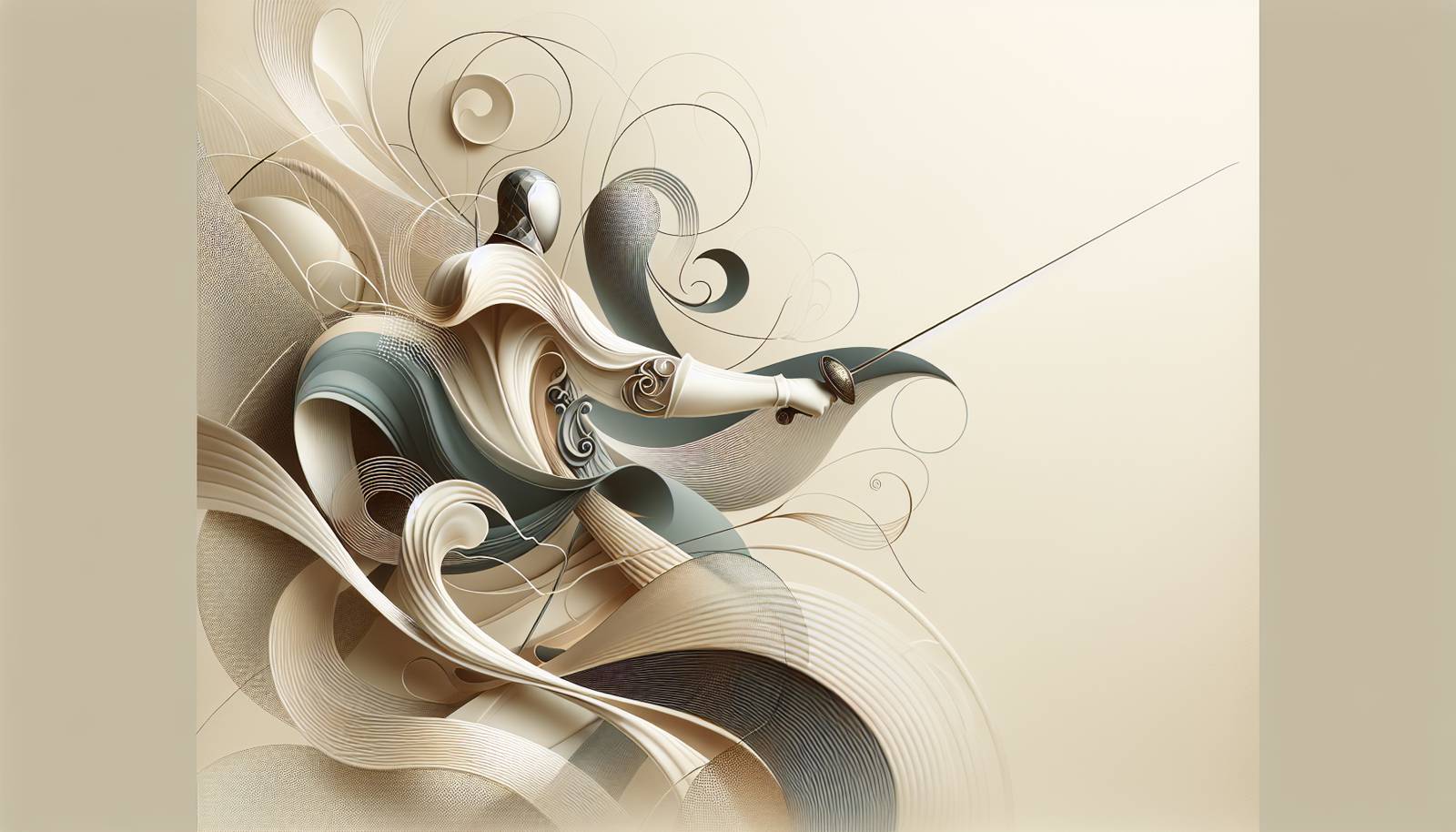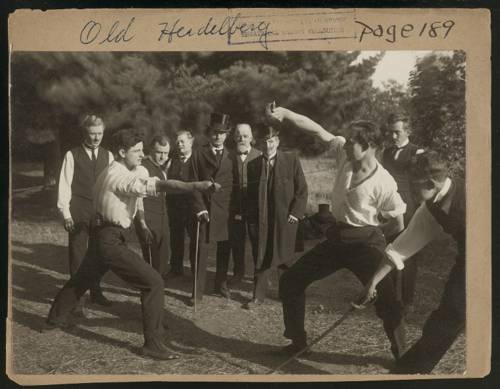
FAQ About The Role of Fencing in Performing Arts

What is the role of fencing in performing arts?
Fencing in performing arts serves multiple purposes. It enhances storytelling by adding physical drama to a performance, often symbolizing conflict or tension between characters. Choreographed fencing scenes allow actors to express emotions non-verbally and engage the audience through dynamic action. Moreover, fencing can represent historical authenticity, giving a realistic portrayal of combat in period-specific pieces.

How does fencing choreography differ between theater and films?
Fencing choreography in theater tends to be broader and more exaggerated due to the need to communicate effectively with a live audience from varying distances. The movements must be clear and dramatic. In contrast, film fencing choreography can be more intricate and subtle, as the camera can capture close-ups that reveal detailed swordplay, facial expressions, and nuances. Both require precise rehearsal and coordination to ensure safety and performance quality.

Why is historical accuracy important in fencing scenes?
Historical accuracy in fencing scenes is vital for authenticity, particularly in productions set in specific eras where swordplay was prevalent. Accurate representation of fencing styles and techniques from different periods helps to immerse the audience in the story's setting and context. It also adds educational value, providing insights into how people fought and understood combat during different historical periods.

What training do actors typically undergo to perform fencing scenes?
Actors usually undergo extensive training with a fight choreographer to perform fencing scenes. This training includes learning basic fencing techniques, safety protocols, and the specific choreography of their scenes. Actors must practice consistently to ensure they look convincing and feel comfortable handling the swords. For some productions, actors may also be taught historical fencing styles relevant to the story's period.

Can fencing be used as a metaphor in storytelling?
Yes, fencing is often used as a metaphor in storytelling to symbolize duels of wit, moral conflicts, or the struggle between opposing forces. Fencing can illustrate the intellectual or personal battles characters face, extending beyond mere physical conflict. The discipline, strategy, and skill involved in fencing mirror these deeper thematic elements, enriching the narrative.

What are some famous theatrical productions or films that feature fencing?
Several famous theatrical productions and films prominently feature fencing. In theater, "Hamlet" and "Romeo and Juliet" by William Shakespeare include iconic sword fighting scenes. In films, "The Princess Bride," "The Mask of Zorro," and "Pirates of the Caribbean" series are known for their inventive and thrilling fencing choreography.

What are the common types of weapons used in fencing for the performing arts?
Common weapons used in fencing for performing arts include the foil, epee, and sabre, each with distinct characteristics. The choice depends on the production's historical context or the style of combat. For example, rapier and dagger are often used for Renaissance-era works, while longswords may be used in medieval settings. These stage weapons are usually modified to be safer for performances.

How do directors and choreographers collaborate on fencing scenes?
Directors and choreographers collaborate closely to ensure fencing scenes align with the overall vision of the production. The choreographer designs the swordplay to match the director's narrative intentions, considering character motivations and story pacing. They work together to integrate fencing seamlessly into the performance, balancing dramatic effect with technical safety and historical authenticity.

Is fencing in performing arts different from competitive fencing?
Fencing in performing arts differs significantly from competitive fencing. While competitive fencing focuses on scoring points through precision and speed, performance fencing emphasizes storytelling, character interaction, and theatricality. The goal in performing arts is to craft visually striking and emotionally compelling scenes, rather than adhering strictly to competitive rules and techniques.

Do fencing scenes require special staging or equipment?
Yes, fencing scenes often require special staging and equipment to ensure safety and effectiveness. This includes stage swords that are blunted or made of safer materials, protective gear for actors, and sometimes padded flooring or barriers. The staging must also allow for ample space and visibility, accommodating choreographed movements and audience perspectives.

What safety measures are taken during fencing scenes in performances?
Safety measures during fencing scenes include using blunted or special stage swords, wearing protective gear, and thorough rehearsal of choreography. Clear communication between actors and choreographers is essential to prevent accidents. Productions also often employ fight directors who oversee safety protocols and ensure adherence to best practices throughout the performance process.

How does fencing enhance character development in a story?
Fencing can enhance character development by revealing personal traits such as courage, aggression, cunning, or restraint. Through fencing, audiences see characters' strategic thinking and emotional responses under pressure. A well-executed fencing scene can demonstrate a character's growth, resolve internal conflicts, or expose vulnerabilities, contributing to a deeper understanding of their arc.

In what ways does fencing contribute to the artistic expression of a production?
Fencing contributes to the artistic expression of a production by adding layers of movement, rhythm, and visual intrigue. It integrates action with theatrical elements such as lighting, sound, and music to create a captivating spectacle. Fencing can also mirror the emotional landscape of the story, using physicality to complement the narrative tone and themes.

Are there specific skills or qualities actors need to excel in fencing for performances?
Actors need physical agility, coordination, and a sense of rhythm to excel in fencing for performances. Additionally, they must possess strong spatial awareness and ability to work collaboratively with partners. Theatrical fencing also demands an understanding of timing and dramatic expression to convincingly portray the character's intentions and emotional journey through the choreography.

What are the challenges of staging a fencing scene in a live theater production?
Staging a fencing scene in live theater presents challenges such as ensuring audience visibility, maintaining safety, and achieving dynamic engagement. The actors must execute precise timing, and the scene must be choreographed to appear fluid and realistic from multiple audience viewpoints. Limited stage space and the need for significant rehearsal time also contribute to the complexity of delivering convincing and safe performances.

How has fencing evolved in performing arts over the years?
Fencing in performing arts has evolved from simple, realistic portrayals of sword fights to more stylized and varied expressions. Changes in audience expectations, advancements in safety technology, and the influence of new storytelling mediums have driven this evolution. Modern productions often blend different combat styles and integrate digital effects to create innovative and captivating fencing scenes.

Can fencing be integrated into non-historical settings in performing arts?
Yes, fencing can be integrated into non-historical settings to add action and conflict, drawing on its dramatic appeal. Productions may adapt fencing to futuristic, fantastical, or abstract settings, using swordplay as a versatile tool for storytelling. Creative interpretation allows fencing to transcend traditional boundaries, contributing to diverse and imaginative narratives.

What role do historical fencing masters play in the authenticity of performing arts?
Historical fencing masters play a crucial role in authenticity by providing insights into traditional techniques and styles of combat. Their expertise helps choreographers create scenes that are not only believable but also accurately reflect the era represented. Masters often serve as consultants to ensure historical fidelity is maintained in both the weapon handling and combat strategies shown on stage or screen.

How do fencing scenes impact the pacing and flow of a performance?
Fencing scenes can significantly impact the pacing and flow of a performance by introducing moments of intense action and suspense. These scenes often serve as climactic points, quickening the narrative rhythm and heightening emotional stakes. Properly placed, they enhance momentum and provide contrast to dialogue-heavy sections, ensuring a dynamic and engaging experience for the audience.

Why is fencing considered an art form within performing arts?
Fencing is considered an art form within performing arts because it combines technical skill with expressive movement, akin to a dance. Each sequence is carefully choreographed to convey story elements and emotions through physical performance. The elegance, precision, and dramatic potential of fencing contribute to its artistic value, elevating it beyond mere combat to a vital creative expression in art.
